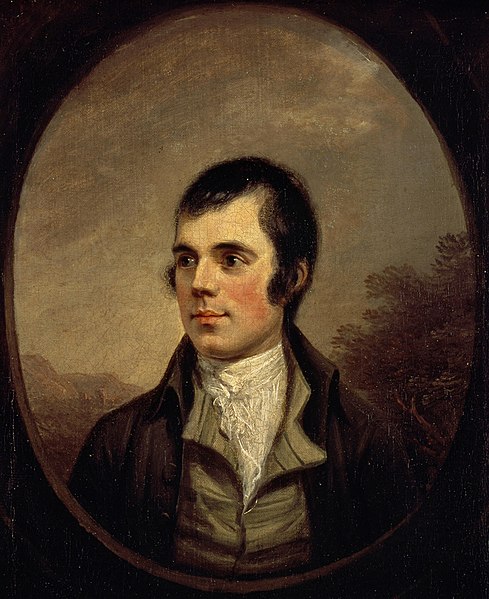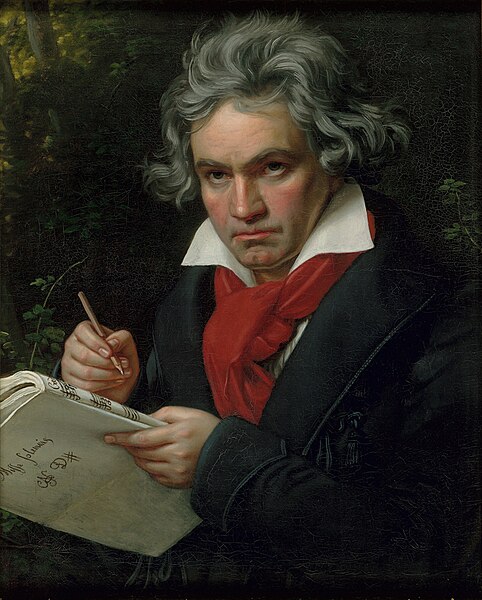"Auld Lang Syne" is a popular Scottish song, particularly in the English-speaking world. Traditionally, it is sung to bid farewell to the old year at the stroke of midnight on New Year's Eve/Hogmanay. By extension, it is also often heard at funerals, graduations, and as a farewell or ending to other occasions; for instance, many branches of the Scouting movement use it to close jamborees and other functions.
John Masey Wright and John Rogers' illustration of the poem, c. 1841
Robert Burns
Ludwig van Beethoven (1770–1827)
Fireworks at Edinburgh's Hogmanay
Scots is an Anglic language variety in the West Germanic language family, spoken in Scotland and parts of Ulster in the north of Ireland. Most commonly spoken in the Scottish Lowlands, Northern Isles, and northern Ulster, it is sometimes called Lowland Scots to distinguish it from Scottish Gaelic, the Goidelic Celtic language that was historically restricted to most of the Scottish Highlands, the Hebrides, and Galloway after the sixteenth century; or Broad Scots to distinguish it from Scottish Standard English. Modern Scots is a sister language of Modern English, as the two diverged independently from the same source: Early Middle English (1100–1300).
Statue of Robert Burns in Canberra, Australia
Lufe God abufe al and yi nychtbour as yi self ("Love God above all and thy neighbour as thyself"), an example of Early Scots, on John Knox House, Edinburgh
William Wye Smith's The New Testament in Braid Scots







